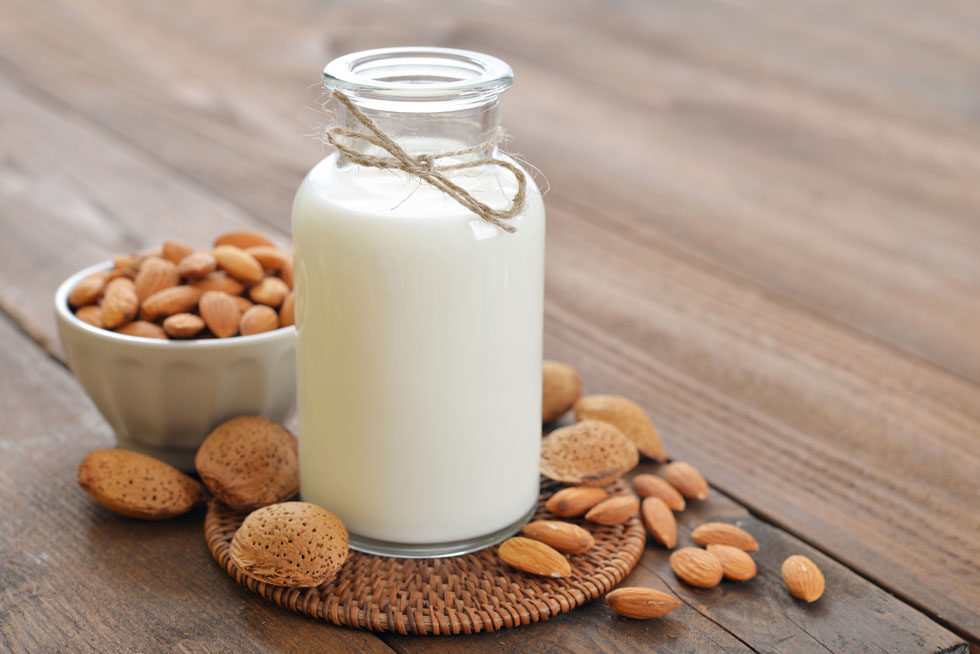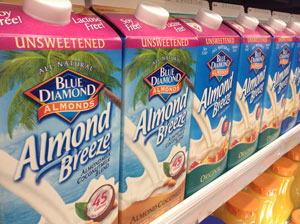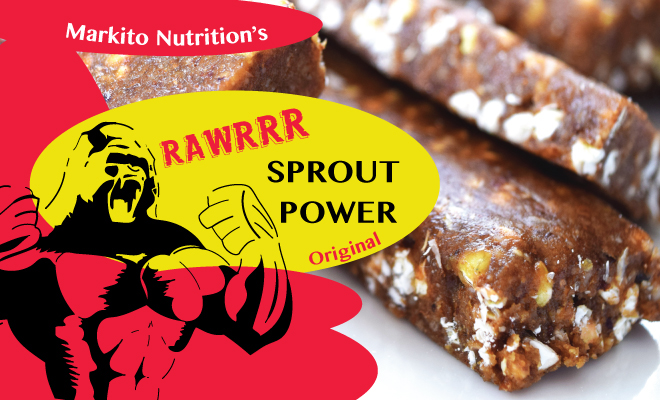
A few years ago I wrote an article exposing the synthetic ingredients in commercially sold almond milks. It went viral. People were shocked to discover that what is sold in stores is essentially just a mixture of water and low quality synthetic supplements. To this day I still receive emails from around the world asking exactly how we make the real stuff for our clients. Spoiler alert: we use actual almonds! Here’s how we do it, including tips on how to avoid common mistakes:
Ingredients:
Pure water, Organic European almonds. Yup, that’s all!
Instructions:
- Get the right almonds: They need to be organic, truly raw European almonds. We normally source them from Italy or Spain. By law, commercially grown almonds in the U.S. are always sterilized by one of two methods: either using high temperatures (such as steaming) or fumigated with a chemical called propylene oxide- a toxic carcinogen that has been banned for use on food products in Canada, Mexico, and the European Union. In addition to being potentially harmful, these treatments destroy many of the beneficial bioactive ingredients in almonds. The only truly raw almonds available commercially are from Europe and these are the ones we use to make our almond milk.
- Soaking: The next step is to rinse about 1 cup (143g) of almonds and then soak them overnight in water. Soaking disables enzyme inhibitors and reduces phytic acid naturally present in the nuts. The result is they are more easily digested, and you benefit by increasing the amount of nutrients you absorb.
- Blending: The next day discard the soak water, rinse the almonds, and place them in a blender. Add about 3.5 – 4 cups of pure water*. Blend on high speed until smooth- The less you blend the better it is to prevent heating and oxidation. How long you have to blend depends on the power of your machine- some require just 15 seconds, others may require more.
*An important note regarding water: We use distilled water to make almond milks for our clients. Distillation is by far the best, safest, cheapest and most effective solution for removing the ever growing list of contaminants, including drugs, from our water supply. It is cheaper to invest in your own distiller than to buy bottled water. - Straining: Place a big bowl with a spout on your counter. Hold a nut milk bag over this bowl and pour the contents from the blender into the bag- if it’s your first time start by just pouring about half of the liquid. Twist the bag a few times to seal the top and use your hands to strain the milk. Put some muscle into squeezing the bag. Empty the dry pulp from the nut milk bag into another container, then pour the second half of the contents from the blender into the bag and continue to strain. As you get more comfortable with straining you can do it all in one shot instead of half at a time. You can store the dry pulp to use for other recipes. Freeze it if you’re not sure what to do with it just yet.
- Storing: Once you are done straining, pour the almond milk from the bowl into a glass jar with a solid lid and store it in the fridge- place it in the coldest section of your fridge (not on the door). The milk will separate after some time but that’s normal- you just have to shake before use. It stores well for 5 to 8 days depending on your fridge. If it doesn’t last as long for you try lowering the temperature in your fridge, or perhaps blend a little less to prevent rapid oxidation.
Our local clients benefit by being able to order and pick up our freshly made products, such as almond milk, on a weekly basis. However, of all the labor intensive items we produce for them, almond milk is the easiest to replicate without much effort. It may be a little messy at first but that’s only until you get the hang of it. And you will.
Happy milking,
Marc Jaoudé
Naturopath, Health Educator
Nutrition & Exercise Specialist



I love this recipe as well as all the others! Marc, you’re a wealth of knowledge which has benefited not only myself but my family. I’m a healthcare professional and I’ve learned a lot. Thank you!
-Dr. Chattha (Toronto)
Thank you so much for your kind words Dr. Chattha. It is great to see more healthcare professionals passionate about healing through food and good lifestyle habits. Wishing you a great weekend.
Thx for your site. I learned while visiting Aruba that all their water supply is distilled seawater which is then remineralized by running the water over rocks. All their tap water is made this way, for the Whole Island.
Hi Cindy, thank you for sharing this information with us.
Would you please address the concerns regarding the presence of cyanide in almonds (bitter almonds moreso vs sweet almonds). It’s my understanding that the cyanogenic potential of almonds is released upon their maceration (as done in the blender) where an enzyme is released which then converts cyanogenic glycosides into hydrogen cyanide (cyanide). The cyanide poisoning is determined per kg of body weight, so might there be a concern for cyanide poisoning with your recipe, especially for infants and children? Thank you for addressing this.
Thank you for your question. Wild bitter almonds – not normally consumed by the public – contain 40 times more cyanide than the non bitter variety commonly purchased. As long as you don’t use wild bitter almonds, and don’t consume over 1000 almonds per day, there is no risk of cyanide poisoning. My 18 month old has been consuming homemade almond milk since she was 1, and our clients have consumed it in abundance for many years, as has an ever growing community worldwide. I suspect that if there was an issue there would have been hundreds if not thousands of cases of cyanide poisoning from almonds reported by now. Thank you.
Thank you.
Dr. Jaoude,
Thank you for your great website! I have just started eating sunflower and pea shoots/sprouts I get at the local market and I do enjoy their freshness. As for water, one of my brothers swears by kangen water. How does it compare to distilled water. There are so many conflicting opinions on the internet. Even Dr mercola waded into the discussion and apparently said that “Early death comes from drinking distilled water”.
You are welcome!
Regarding water: this is a very profitable industry and the marketing claims – even those that sound scientific – are often simply misinformation. Even well meaning health professionals can contribute to the confusion at times. When it comes to water we have to deal with facts, the top one being that our water supply is heavily contaminated – and it’s not getting any better.
Thus, before thinking about the ph level of our water (alkaline water, etc), we have to be concerned with the removal of toxins. Water purification is first and foremost, and no other system removes more contaminants on a reasonable budget than a distiller. Water alkalizers are terrible at removing contaminants, and even reverse osmosis systems are inferior to distillation.
If you feel the need to do something to the water once it’s been purified you can do so- although I don’t see any real necessity. Please refer to a similar question asked by Aaron below, and my response to him.
Glad you are enjoying the website!
Mr. Jaoude,
It was only an hour or two ago that I found one of your YouTube videos. That, in turn, led me to this website. What a fantastic resource. I appreciate all the free articles and videos. It’s obvious you put a LOT of work into them.
Recently, I asked a Naturopath about the best water to drink, as I’d heard that distilled water is the best. In fact, I believe Dr. Alan Goldhamer provides distilled water at the TrueNorth Health Center for his patients undergoing water fasting.
The reply from the Naturopath was surprising. He stated that filtered water is the best to drink. He alleged that reverse osmosis and distilled waters are de-mineralized and have a high acid load — around 5.6 on the pH scale.
Do you feel there’s any truth to that assertion? Or, would that only matter to those eating a terrible, highly-processed diet? I’m a bit confused on the matter.
Many thanks,
Aaron
Dear Aaron,
Thank you very much for your comments. There is some confusion when it comes to distilled or low TDS water (TDS stands for total dissolved solids). The confusion is mainly due to misinformation spreading across the internet like wildfire, but rest assured there is no valid scientific evidence to support the claims that low TDS water is a hazard to our health. The opposite is in fact true. Furthermore, there are no health-based guidelines anywhere in the world for minimum drinking water TDS. As far as safety goes, the US Navy used distilled sea water for 4 decades with no health issues reported. NASA reported no health issues as well. What is even more interesting is that millions of people in the US have been consuming low TDS water for decades as private wells and certain small municipal systems produce such water. No adverse effects reported.
The real issue we are facing is pollution. If you watch my video entitled “What About Fish” you will begin to appreciate the fact that there may be no clean body of water left on this planet. So the first priority is to remove toxins from our drinking water. Anybody concerned about the quality of their water should really start there. The most affordable and efficient way to purify our water is through distillation. Filtered water doesn’t come close to removing the amount of toxins that distillation succeeds in eliminating. When you have a boil-water advisory nobody would ever suggest that filtered water is safe.
After distilling to achieve safe drinking water, whether you choose to re-mineralize the water is up to you- but there is no reason to do so- none whatsoever. Minerals are best obtained through the consumption of plants.
The pH of distilled water is normally just under 7. There should be no concern about this.
My clients have all purchased a distiller for their home, and they remind me on a regular basis what an incredible investment it was for them.
I wish I had more time to elaborate on the points I’ve made above- a video on this topic has been on my to-do list for quite a while!
Hope this helped.
Marc
Dear Mr. Jaoude,
Thank you so much for the detailed reply. Indeed, it was very helpful. It now makes even more sense why the TrueNorth Health Center provides distilled water for their water fasting patients.
I had no idea about the US Navy and NASA using distilled water. Obviously, if distilled water was a problem, they would have surfaced in all that time.
Tomorrow, I will watch your “What About Fish” video. Sadly, I’m somewhat aware of how humans have polluted our water, soil, and air. It’s very discouraging. One day, maybe we’ll reverse the trend.
Again, I appreciate the courtesy of your time. You’re amazingly knowledgeable and well-researched, generous, and an excellent writer.
Until we meet again, best wishes.
Aaron
It is my pleasure and privilege Aaron.